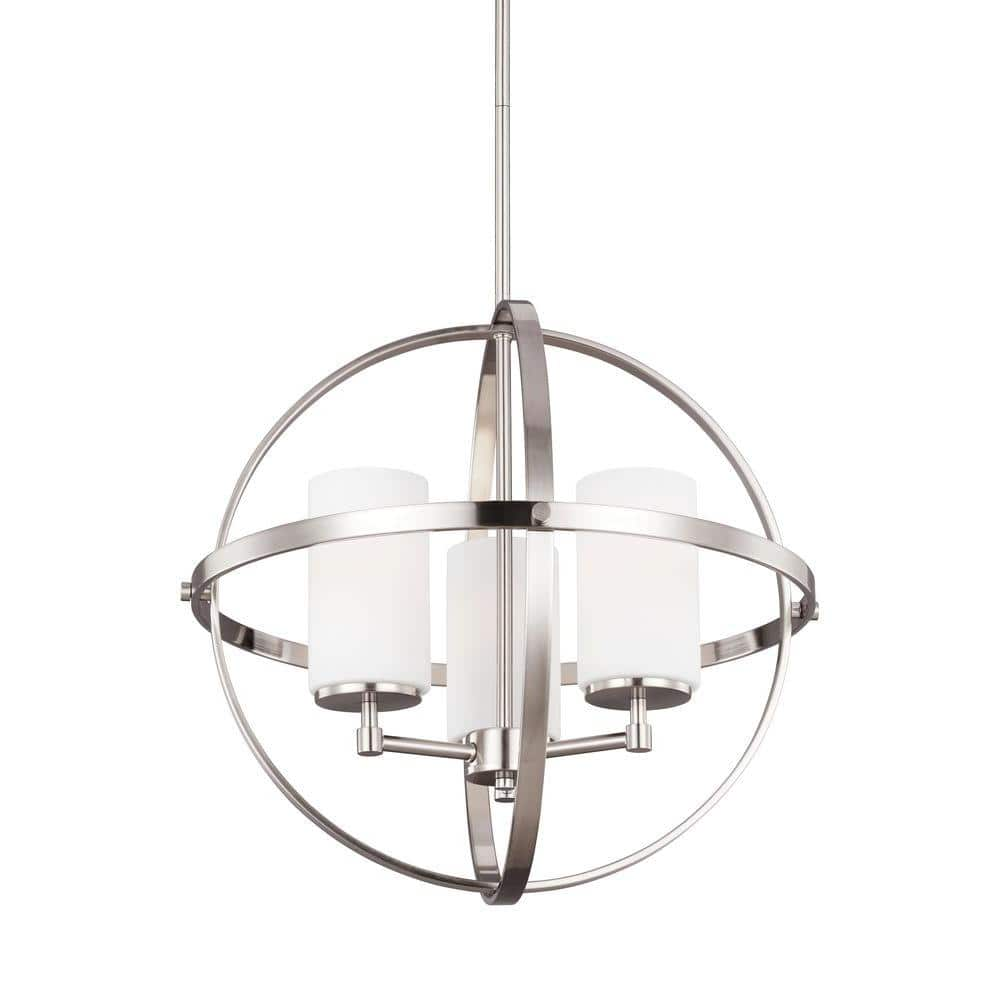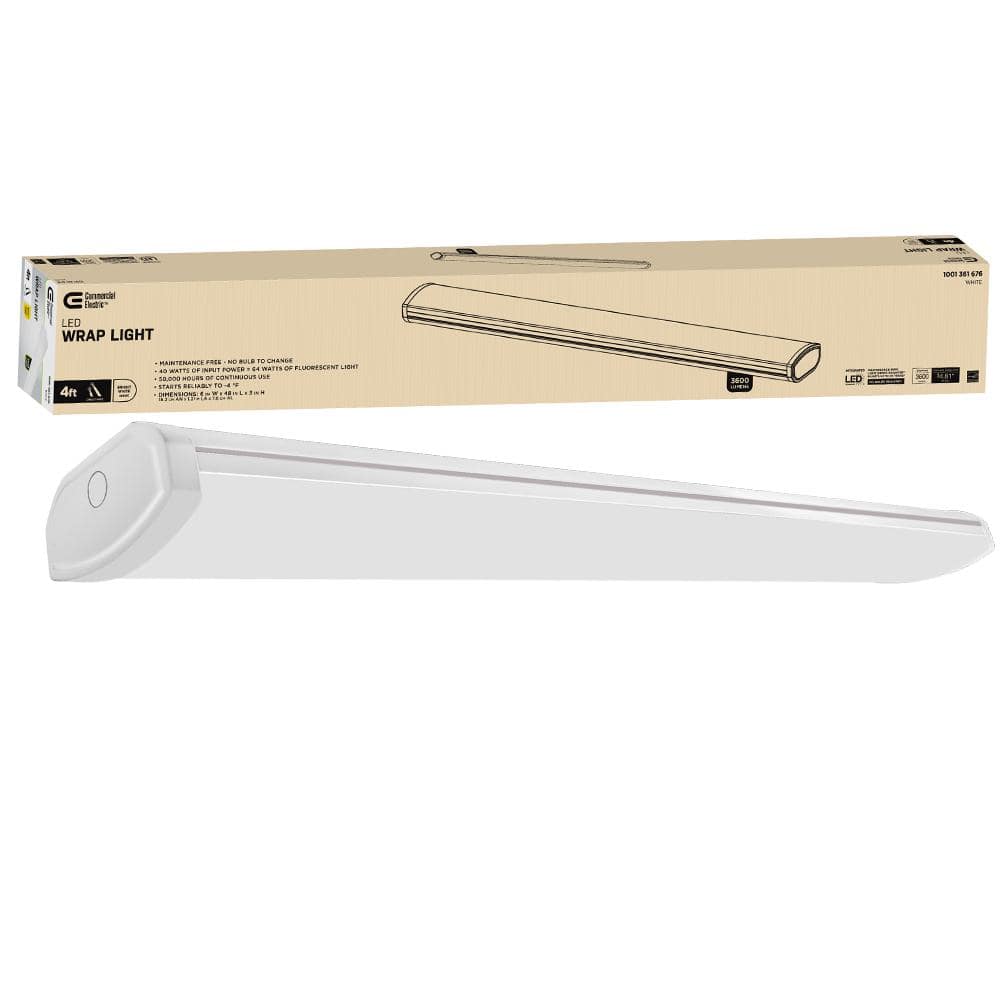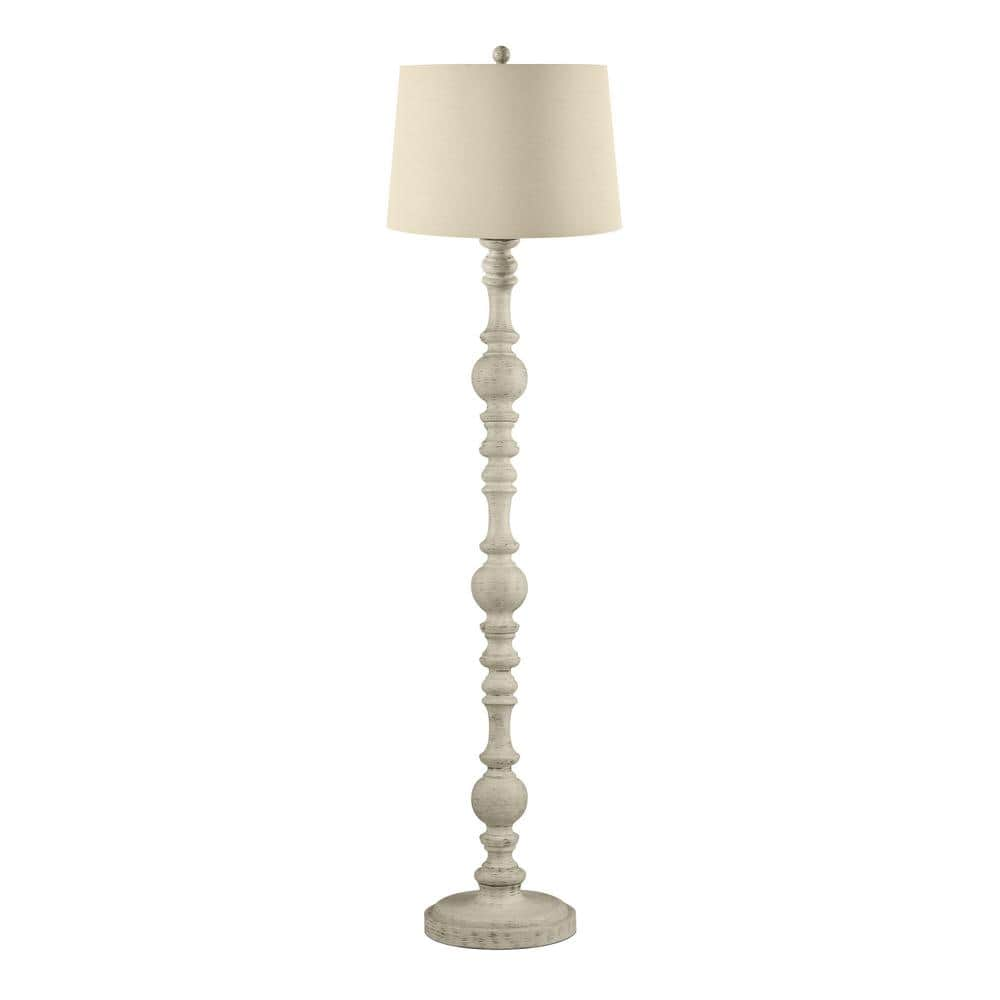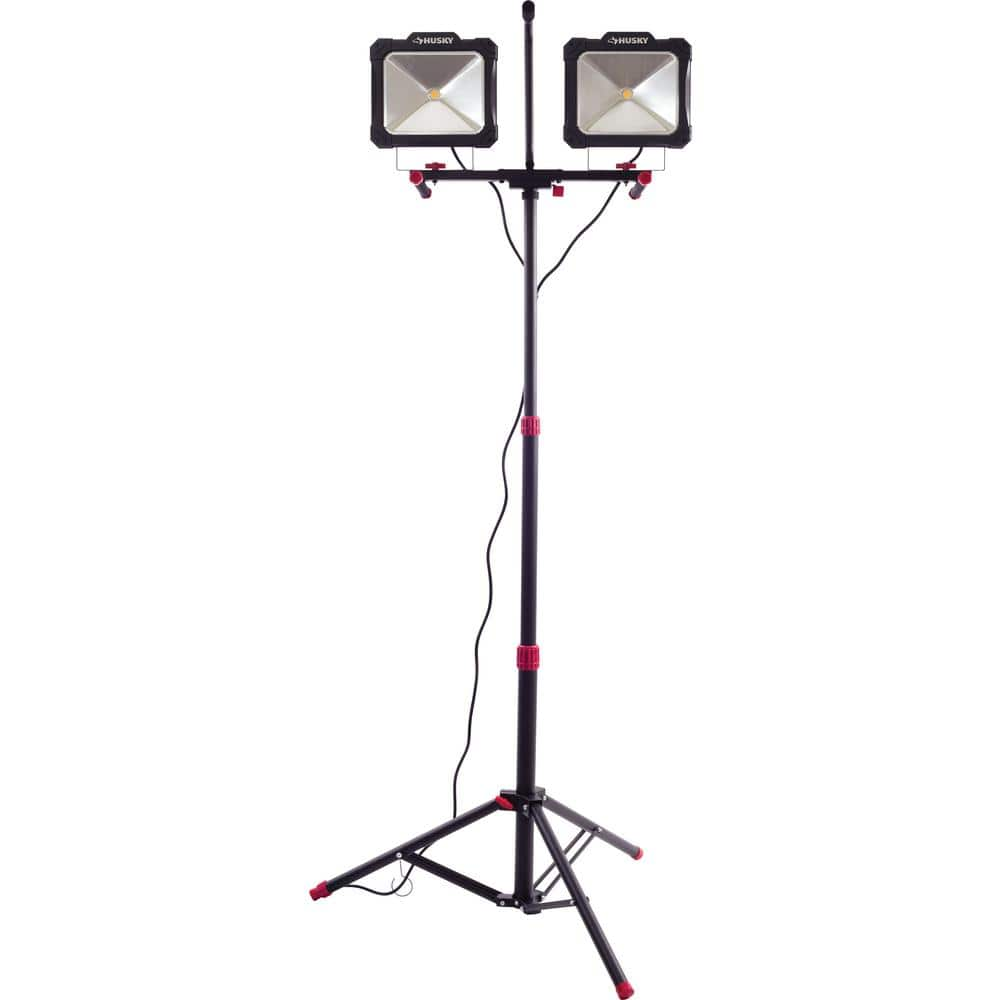Generation Lighting Alturas 3-Light Brushed Nickel Modern Dining Room Hanging Globe Chandelier with Etched White Glass
Modern design with contemporary nickel finish and white glass. Uses 3 medium base A19 bulbs, sold separately. Dimensions: D: 19” H: 18.75″; includes sloped ceiling mount.
The Alturas 3-light single tier chandelier in brushed nickel is the perfect way to achieve your desired fashion or functional needs in your home. The silhouette of the modern Alturas lighting collection features an interlocking, spherical steel frame, which harkens back to the Unisphere constructed for the 1964 New York World’s Fair. The minimalist Alturas Collection draws the eye to the soft, warm glow of the light emitted from the cylindrical Satin Etched glass shades. The full assortment includes three-, five- and 9-light chandeliers, a 1-light mini pendant, a 3-light pendant, a 2-light semi flush which is convertible into a pendant, and 1-,2-, 3- and 4-light bath fixtures all offered in a Brushed Nickel finish. Incandescent and ENERGY STAR-qualified fluorescent lamping are available.
- Featured in the decorative Alturas collection
- 3 A19 medium 100-Watt light bulbs
- Etched / white inside glass shades
- Easily converts to LED with optional replacement lamps
- Sloped ceiling mounting hardware included
- cETL listed for damp locations
- Supplied with 12 ft. of wire
- A great choice for your do-it-yourself project
- Decorative brushed nickel finish to accent and brighten your room
- Preferred brand choice of builders and electricians
Additional information
| Chain Length (in.) | 42 |
|---|---|
| Fixture Depth (in.) | 19 |
| Fixture Height (in.) | 18.75 |
| Fixture Weight (lb.) | 8.175 |
| Fixture Width (in.) | 19 |
| Maximum Hanging Length (in.) | 42 |
| Mounting Deck Height (in.) | 0.75 |
| Mounting Deck Width (in.) | 5.13 |
| Certifications and Listings | ETL Certified |
| Manufacturer Warranty | 1-Year Warranty |






by Edani
The only assembly was the frosted part otherwise pretty simple to install. And it looks amazing.
by Kim
Perfect light for our kitchen!
by Sharyn
I had ordered the 3 sconce light and is perfect for my dining room as I only have an 8ft ceiling. I did not see the minimum drop length listed which I used and came to about 37″